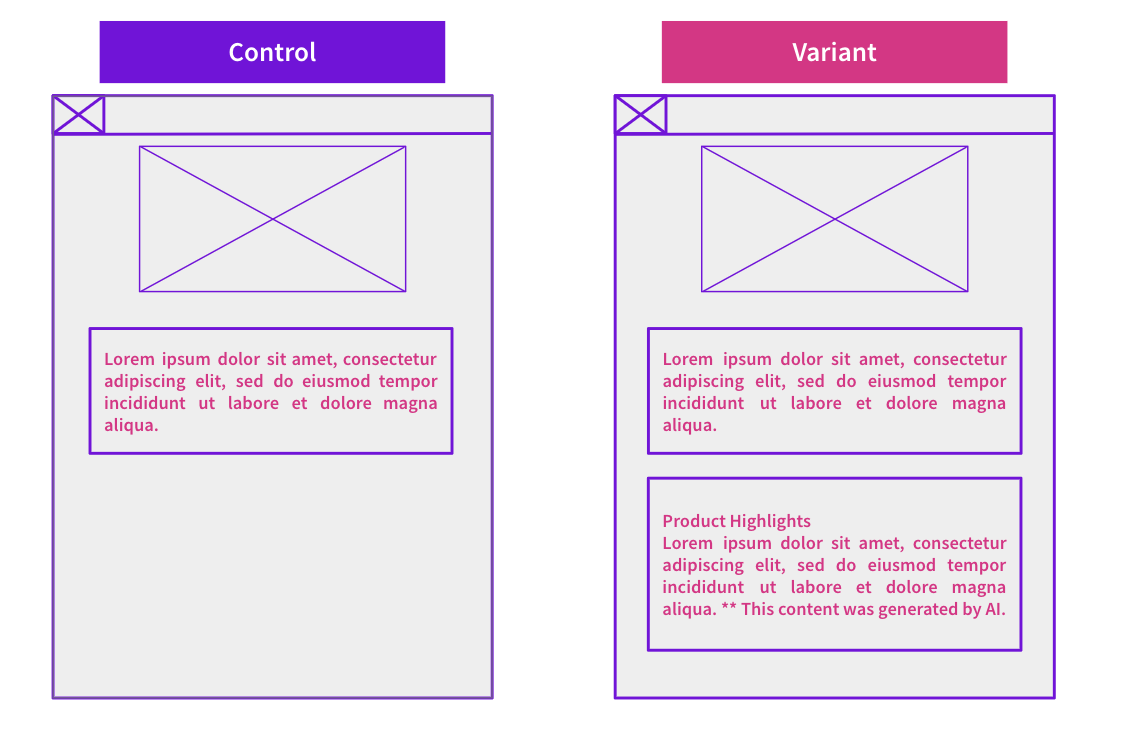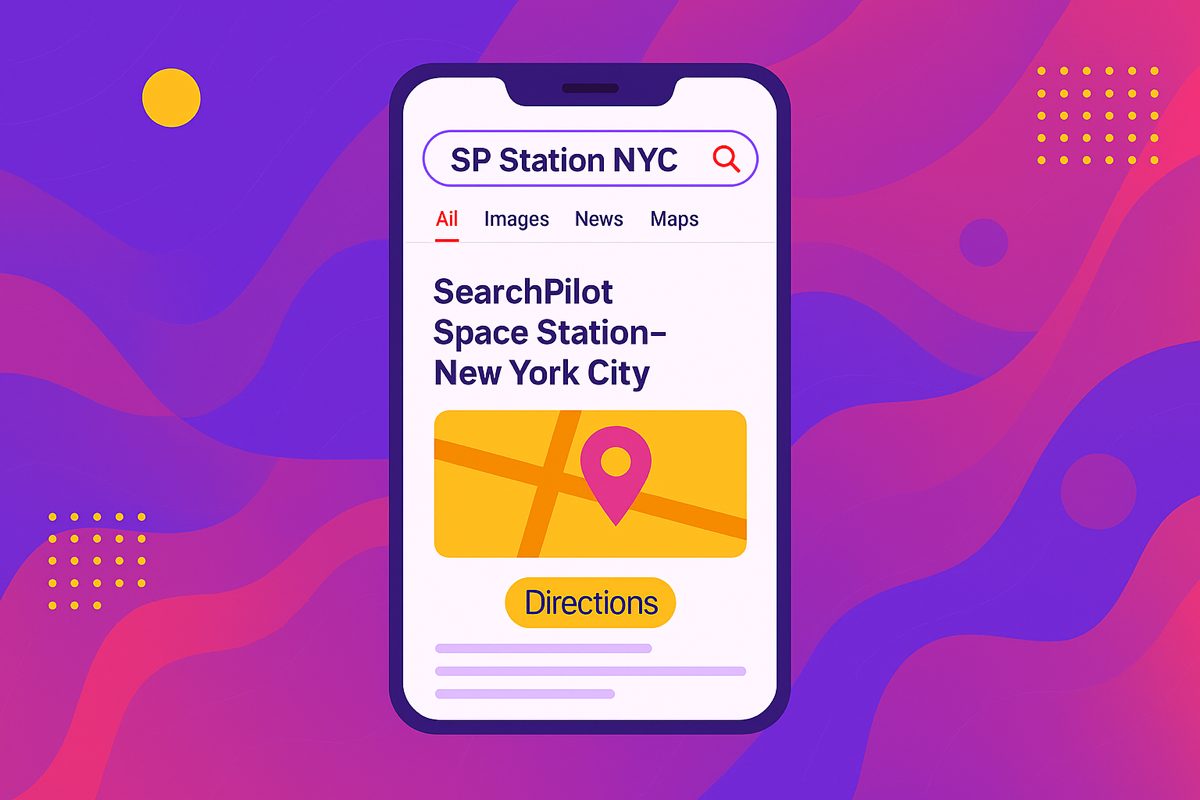Start here: how our SEO split tests work
If you aren't familiar with the fundamentals of how we run controlled SEO experiments that form the basis of all our case studies, then you might find it useful to start by reading the explanation at the end of this article before digesting the details of the case study below. If you'd like to get a new case study by email every two weeks, just enter your email address here.
In recent years, Google has become increasingly assertive in shaping how pages appear in search results, rewriting title tags and meta descriptions at scale. For SEOs, this trend has raised a critical question: How much control do we really have over what users see in the search engine results pages (SERPs)?
While meta descriptions are not a direct ranking factor, they remain vital for influencing click-through rates (CTR). Yet crafting a concise, relevant, and compelling description is only half the battle, as Google may choose to ignore it entirely. As a result, assumptions about best practices are being challenged, and data-driven experimentation is more important than ever.
What experiments has SearchPilot performed related to meta descriptions?
In this roundup, we highlight seven recent case studies exploring unconventional meta description approaches—from using emojis and adding salary ranges to letting Google take the wheel. The results reveal that even seemingly minor changes can yield surprising outcomes.
Using Emojis in Meta Descriptions: A Visual Gamble?

The use of emojis in meta descriptions is a divisive topic in SEO. Some see them as eye-catching enhancements, while others consider them unprofessional or off-brand.
We tested replacing the numerical values in category page meta descriptions with their emoji equivalents (e.g.,’125’ became ‘1️⃣2️⃣5️⃣’). The hypothesis was that the colorful emojis would attract more clicks in a competitive vertical.
Discover the impact of this visual experiment in our detailed case study!
Which is Better: Our Meta Description or Google's?
Google frequently rewrites meta descriptions, often pulling text from a page’s navigation or body content instead of using the provided meta tag. A customer of ours observed this pattern on their location-specific pages, where Google consistently overlooked human-written meta descriptions in favor of snippets from navigation menus and content facets. To counter this, they tested utilizing the data-nosnippet attribute to prevent Google from extracting content from the page's body for the snippet, effectively forcing it to use the intended meta description.
Find out whether regaining snippet control led to higher engagement in our case study.
Can Salary Transparency Improve Job Page Performance?

For job listings, salary data can be a key decision factor. One of our customers noticed Google was scraping an ‘average salary’ figure from their page to use as the meta description. To test whether a more informative presentation would help, they revised their meta descriptions to include a specific salary range, ensuring this range was also present in the on-page content. The goal was to encourage Google to use their revised, more detailed meta description and to see if providing a salary range would improve CTR.
Explore the results of this salary transparency experiment in our case study.
What Happens When You Remove Meta Descriptions Entirely?
With Google's increasing tendency to rewrite not just meta descriptions but also title tags, some SEOs might wonder about the effectiveness of letting Google take the reins entirely. One of our customers with numerous pages for physical storefronts, which previously had generic meta descriptions, decided to test this. Lacking the resources for custom rewrites and unsure of the best approach, they removed the meta descriptions altogether, allowing Google to select snippets from the page content.
See whether giving Google full control improved performance in the case study.
Does Social Proof in Meta Descriptions Increase Clicks?

Trust indicators like ratings and reviews can sway user decisions. But can incorporating these ratings into meta descriptions enhance SERP visibility and entice more clicks?
We tested this by adding third-party trust signals (positive pricing and transparency ratings) into the meta descriptions of a customer’s flight booking pages, which previously had no on-page ratings. The hypothesis was that displaying the ratings would build trust and increase CTR.
Learn whether this trust-building approach boosted click-through rates.
Does Including ‘Estimated Read Time’ Influence Engagement?
Noticing that Google sometimes appeared to be adding ‘Estimated read time’ snippets to blog post meta descriptions (scraped from the page content), one of our e-commerce customers decided to test this proactively. For their blog pages that already displayed read times on the page but weren't having this information pulled into the SERP, they tested adding ‘Estimated read time: X min’ to the beginning of their meta descriptions. The expectation was that this information, seemingly valued by Google, would improve user engagement.
Discover whether this informational tweak had an impact in our case study.
Does Removing Unoptimized Meta Descriptions Improve Click-Through Rates?

Given Google's propensity to rewrite meta descriptions - especially those exceeding character limits or deemed irrelevant - an e-commerce customer of ours tried a counterintuitive approach. They completely removed meta descriptions from pages where the existing tags were too long or poorly optimized. The hypothesis was that allowing Google to generate descriptions from page content autonomously would result in snippets better aligned with user queries, thereby increasing CTR.
Find out how this counterintuitive strategy played out in the case study.
Rethinking Your Meta Description Strategy?
These diverse case studies underscore a critical reality in SEO: there are no universal guarantees when it comes to meta descriptions. Strategies that seem intuitive, like adding helpful information or visual cues, can sometimes backfire or have no discernible impact. Conversely, giving more control to Google, or even removing descriptions entirely, can occasionally yield positive results.
The key takeaway: Meta description strategy should never be set-and-forget.
Google’s rewriting behavior, user preferences, and SERP dynamics are constantly evolving. Rigorous, ongoing testing is not just about validating hypotheses anymore—it's essential for staying competitive. Because if you're relying on outdated assumptions or static templates, you're likely missing opportunities to enhance visibility, boost engagement, and drive more clicks.
How our SEO split tests work
The most important thing to know is that our case studies are based on controlled experiments with control and variant pages:
- By detecting changes in performance of the variant pages compared to the control, we know that the measured effect was not caused by seasonality, sitewide changes, Google algorithm updates, competitor changes, or any other external impact.
- The statistical analysis compares the actual outcome to a forecast, and comes with a confidence interval so we know how certain we are the effect is real.
- We measure the impact on organic traffic in order to capture changes to rankings and/or changes to clickthrough rate (more here).
Read more about how SEO testing works or get a demo of the SearchPilot platform.



